DS Architects have successfully converted an existing three-storey building at Deakin University’s primary campus in Burwood, Melbourne, into a new science precinct for the institution’s School of Life and Environmental Sciences, and Faculty of Arts and Education.
Today transformed into a functional, modern, built-for-purpose facility, the science precinct’s story is one of rebirth.
The existing building had presented a number of obstacles that made repurposing complicated from the outset. Apart from asbestos and hazardous material removal, the project team had to work with a structure that was designed with columns running down the middle of the building, and which had limited floor-to-floor space that did not accommodate heating and cooling.
In particular, the restricted heights of the existing building required considered design of ceilings and coordination of services to ensure good ceiling heights were maintained throughout the laboratories – a key area of the building upgrade program. Other important spaces include laboratory staff accommodation, and a new internal atrium between three buildings – Buildings M, N and G – to house informal student spaces, student amenities, and circulation to the labs.
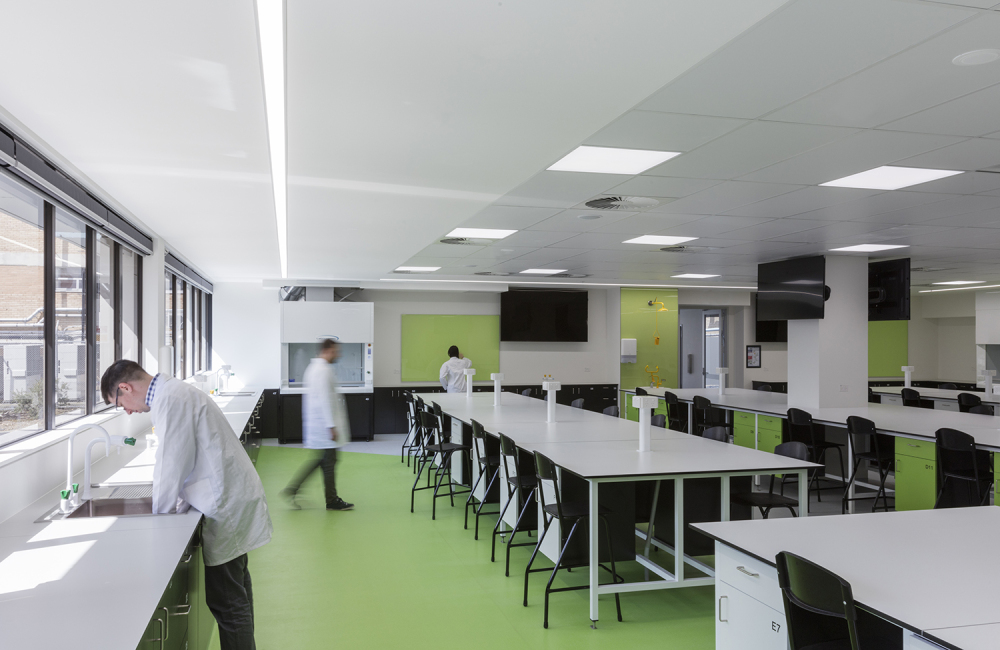
A two-fold challenge was presented to the team during the design of the labs. Firstly, the laboratories had to be planned around existing services plant rooms located in the middle of Building M on each floor. These plant rooms needed to remain in-situ without obstructed access.
The second issue was to do with the audio visual (AV) installations within the labs. Because of the existing structural impediments and laboratory sizes, AV consultants, Parity Technology Consulting, had to ensure the installations delivered the curriculum and collaboration required, as well as established good sightlines for all students despite the structural challenges.
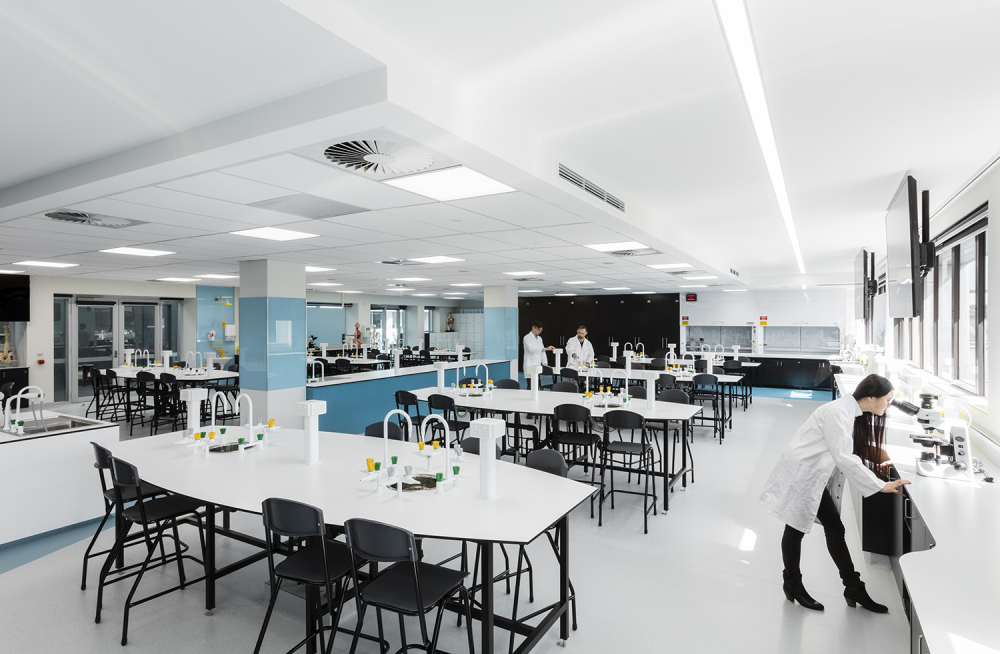
In order to keep the teaching labs comfortably large to improve the efficiency of course delivery, the design team decided to boldly transform an existing external courtyard into a new internal atrium.
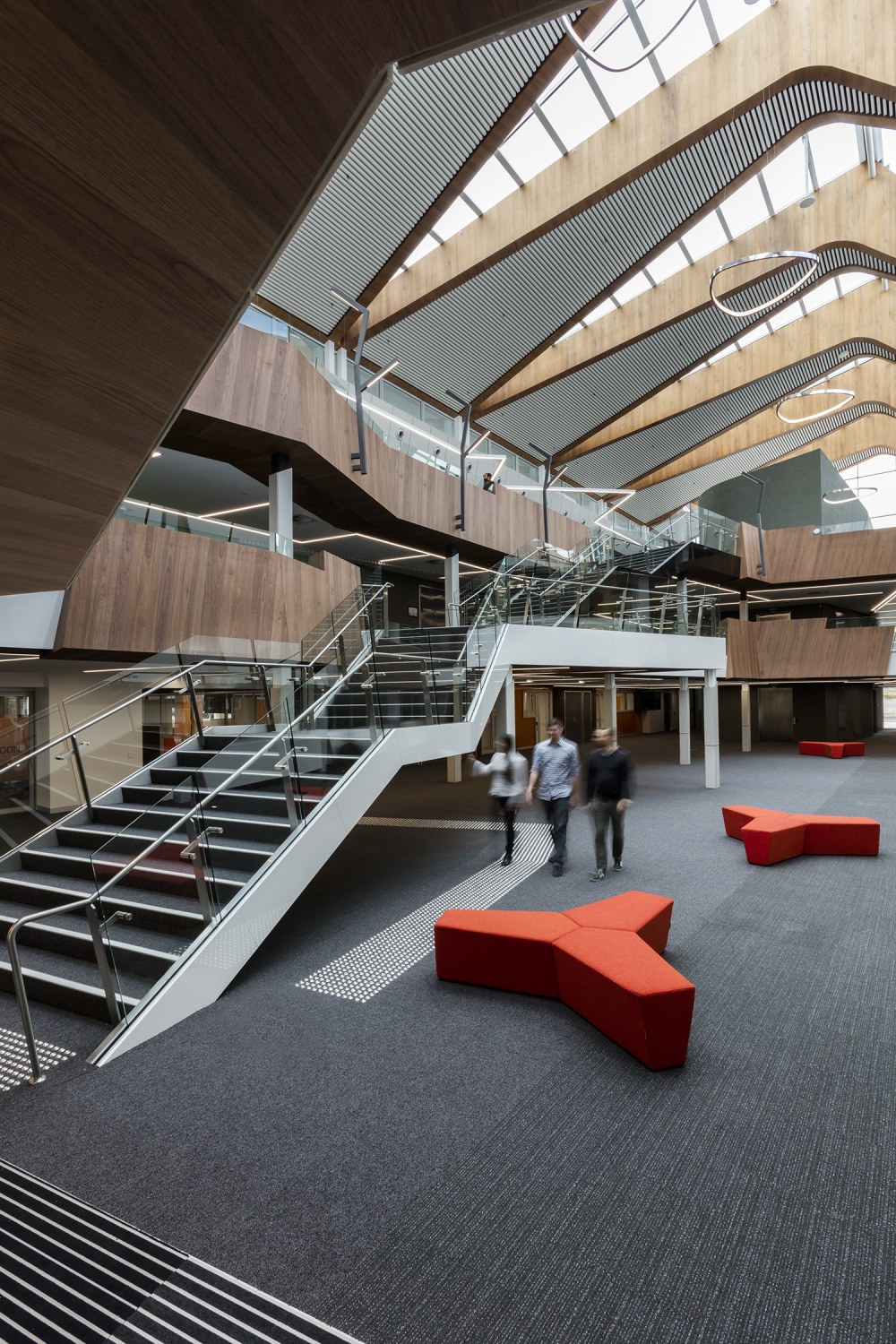
Eyes are drawn upward within this new space, toward a glass roof that allows natural light into the centre of the precinct. The team had taken a very traditional pitched roof shape, stretched it, sliced it through with a zig-zag of glazing, and inserted it 15m up, over an 18m wide external courtyard.
This was done with the intention of redirecting circulation within Building M to this new internal courtyard, but meant the existing facades of Buildings N and G had to be fire separated and sprinkler protected. The team worked closely with the Melbourne Fire Brigade and Melbourne Water to ensure compliance during the upgrade.
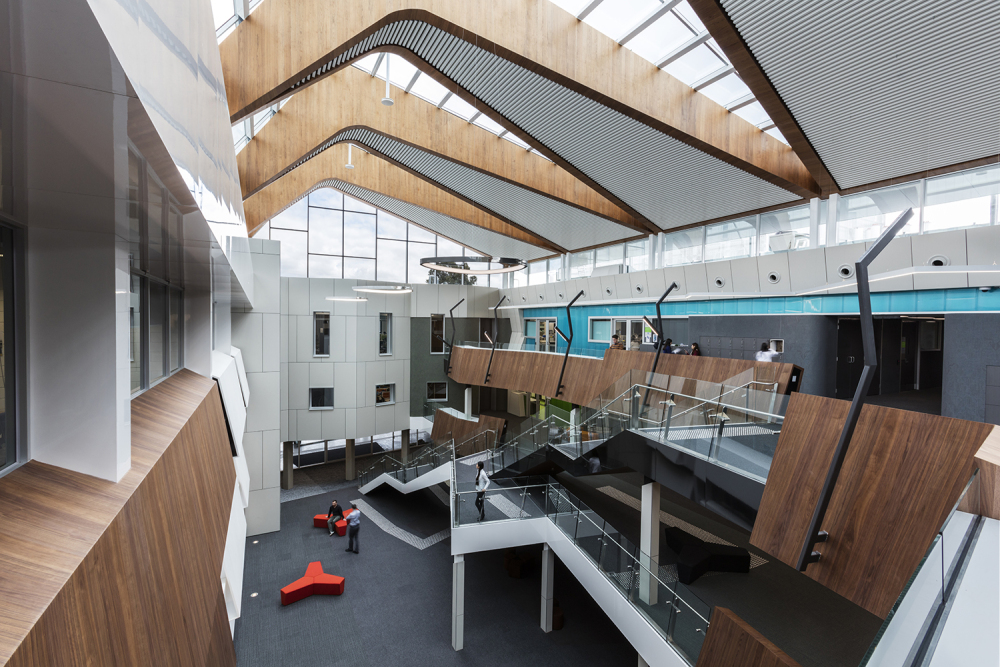
To meet the brief of creating warm and inviting learning spaces, the design team used materials sourced both locally and from abroad. In areas of high pedestrian traffic, Bolon, a textured lining made from textile waste, provided durable wall linings while acting as a feature wall lining to identify utility areas.
Instead of specifying the traditional homogenous vinyl flooring within labs, the team chose Tarkett Tapiflex, a vinyl flooring with a geometric pattern that was made in France, to inject a more contemporary aesthetic to the rooms.
Coloured polycarbonate translucent sheets from Rodeca, which are made in Germany, were applied to the internal facades to give each level its own identity to help with wayfinding. Meanwhile, in areas of direct sunlight, a new type of glue had to be developed to minimise the warping and unbinding of Eveneer timber veneer in adverse heat conditions.
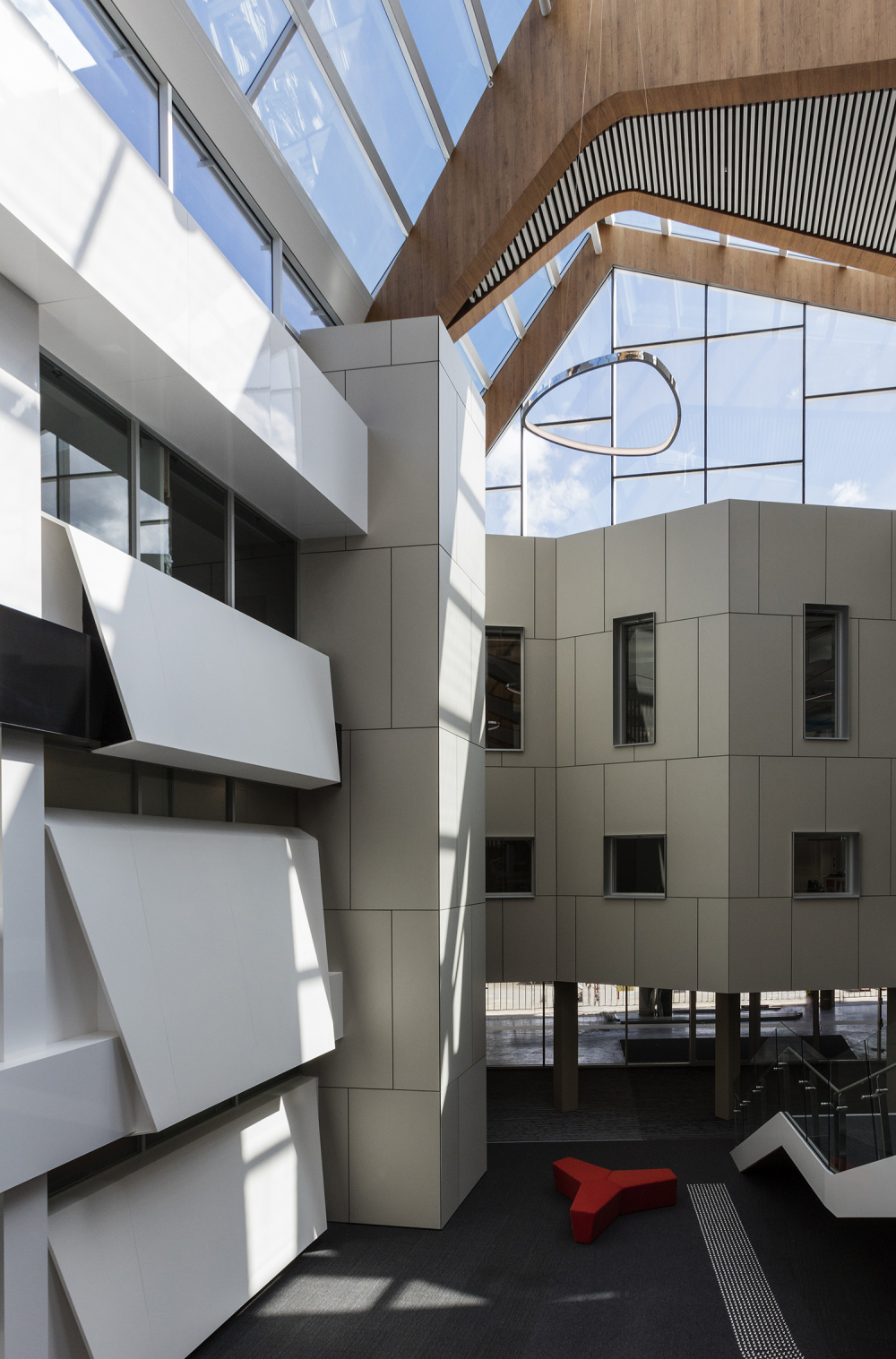
Despite the long lead times due to the sourcing of materials from abroad, the new facility was delivered within budget and six weeks ahead of schedule. Construction was done in stages to minimise disruption and ensure classes could continue. The second stage, which began in 2016, involved the fitout of the atrium and construction of the remaining laboratories on the lower two levels.
DS Architects is currently working on two further projects to complete Deakin University’s Science Precinct – a Robotics Lab and a Student Hub, which will be completed in 2017.
PRODUCTS
WALL LINING
BOLON
BENCHTOPS
LAMINEX, CHEMICAL GRADE COMPACT LAMINATE
VINYL FLOORING
TARKETT AUSTRALIA, TAPIFLEX
INTERNAL FACADES
RODECA COLOURED POLYCARBONATE TRANSLUCENT SHEETS
TIMBER
EVENEER TIMBER VENEER

